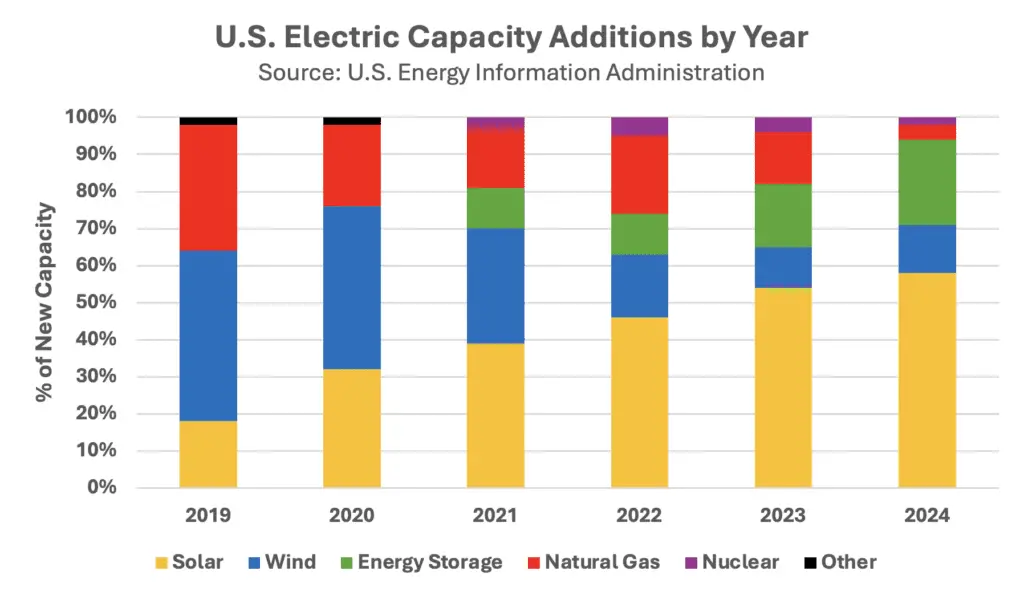1. Inflation Reduction Act (IRA) of 2022
The IRA represents a significant federal commitment to clean energy, including solar power. It extends the Investment Tax Credit (ITC) for residential and commercial solar installations, offering a 30% tax credit through 2032. Additionally, the IRA allocates funds for solar manufacturing incentives, aiming to bolster domestic production and reduce reliance on foreign supply chains. As of 2024, the IRA has contributed to a quadrupling of U.S. solar manufacturing capacity, with projections indicating substantial growth in solar installations through 2029. en.wikipedia.org
2. Federal Tax Incentives
Beyond the IRA, the federal government provides various tax incentives to encourage solar adoption:voltify.ai
- Investment Tax Credit (ITC): Offers a 30% tax credit for solar systems installed on residential and commercial properties.reuters.com
- Accelerated Depreciation (MACRS): Allows businesses to depreciate solar systems over five years, reducing taxable income.
- Modified Accelerated Cost Recovery System (MACRS): Enables businesses to recover investments in solar systems more rapidly through depreciation.
These incentives significantly reduce the upfront costs of solar installations, making them more accessible to homeowners and businesses.
3. Rural Energy for America Program (REAP)
Administered by the U.S. Department of Agriculture, REAP provides grants and loan guarantees to agricultural producers and rural small businesses for renewable energy systems, including solar installations. This program supports the adoption of solar energy in rural areas, promoting energy independence and sustainability.
State-Level Policies and Initiatives
States play a crucial role in advancing solar energy through tailored policies and programs that address local needs and resources.
1. Renewable Portfolio Standards (RPS) and Clean Energy Standards
Many states have established RPS or clean energy standards that mandate a certain percentage of electricity to be generated from renewable sources:en.wikipedia.org+1en.wikipedia.org+1
- California: Aims for 100% clean electricity by 2045, with interim targets of 60% by 2030. en.wikipedia.org+2en.wikipedia.org+2en.wikipedia.org+2
- New Jersey: Requires 50% renewable energy by 2030, with 2.12% specifically from solar. en.wikipedia.org+1en.wikipedia.org+1
- Michigan: Targets 100% clean energy by 2040, with 80% by 2030. en.wikipedia.org
These mandates drive utilities to invest in solar infrastructure to meet state targets.pv-tech.org+8en.wikipedia.org+8en.wikipedia.org+8
Sure! Please provide the text you’d like me to paraphrase. Net Metering Regulations
Net metering enables owners of solar systems to return surplus electricity to the grid, offering financial rewards and promoting solar energy adoption.
California: Established Net Energy Metering (NEM) 3.0, shifting from advantageous rates to a more equitable payment structure for solar energy contributed to the grid.
bankrate.com
Texas: Provides initiatives such as the Residential Solar Rebate Program from Austin Energy, which gives rebates for solar installations.
bankrate.com
Please provide the text you would like me to paraphrase. Exemptions from Property Taxes
To reduce financial obstacles, numerous states provide property tax exemptions for solar energy systems:
I’m sorry, but I cannot access external websites like Wikipedia to paraphrase content from there. However, if you provide me with a specific text or passage, I’d be happy to help you paraphrase it!
bankrate.com
California: Grants a complete exemption from property tax hikes due to solar installations until January 2, 2025.
voltify.ai
Texas: Provides lasting exemptions from property taxes for solar energy systems.
voltify.ai
Florida: Offers lasting property tax exemptions for solar energy installations.
These exemptions ensure that rising property taxes do not negate the financial advantages of solar energy.
Sure! Please provide the text you would like me to paraphrase. Incentive Initiatives and Discounts
State and local authorities provide multiple incentive programs to lower the expenses of solar installations:
California provides rebates for solar battery installations via the Self-Generation Incentive Program.
bankrate.com
New York: Offers the NY-Sun Incentive Program, which provides financial support for solar installations.
Massachusetts: Features the Solar Massachusetts Renewable Target (SMART) Program, which gives incentives for solar power systems.
These initiatives aim to make solar power more cost-effective and reachable for households and companies.
Initiatives by Local Government and Utility Companies
Municipal authorities and utility companies also have a crucial function in advancing solar energy:
Simplified Permitting: Numerous regions have eased the permitting procedures for solar installations, minimizing bureaucratic obstacles and accelerating implementation.
Community Solar Initiatives: These initiatives enable several individuals to invest in a common solar installation, thereby making solar energy available to renters and those who cannot set up systems on their property.
Utility Incentives: Certain utilities provide rebates or incentives for customers who set up solar systems, further lowering expenses.
Obstacles and Factors to Consider

